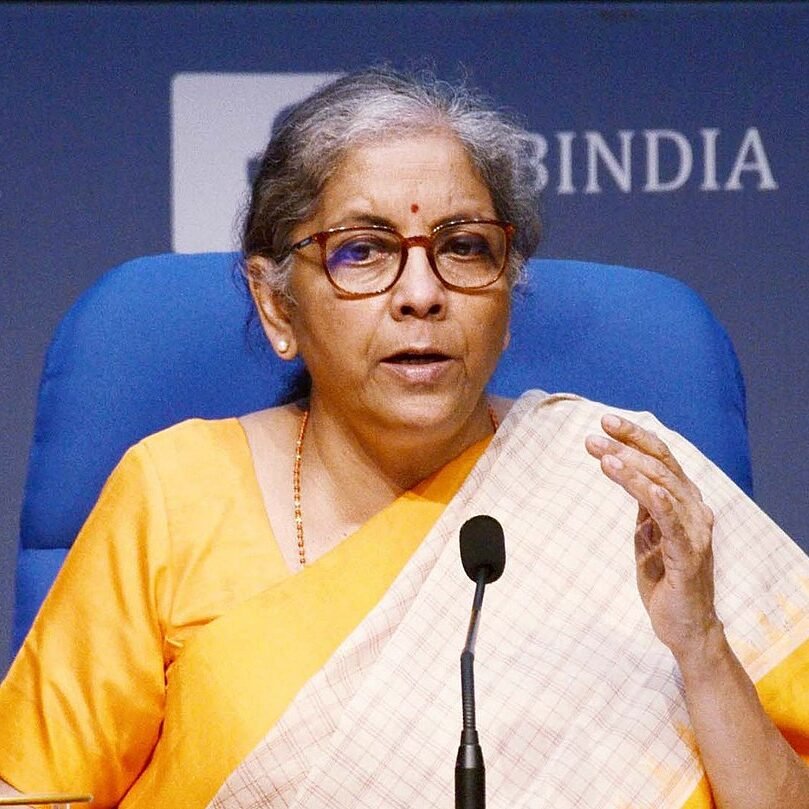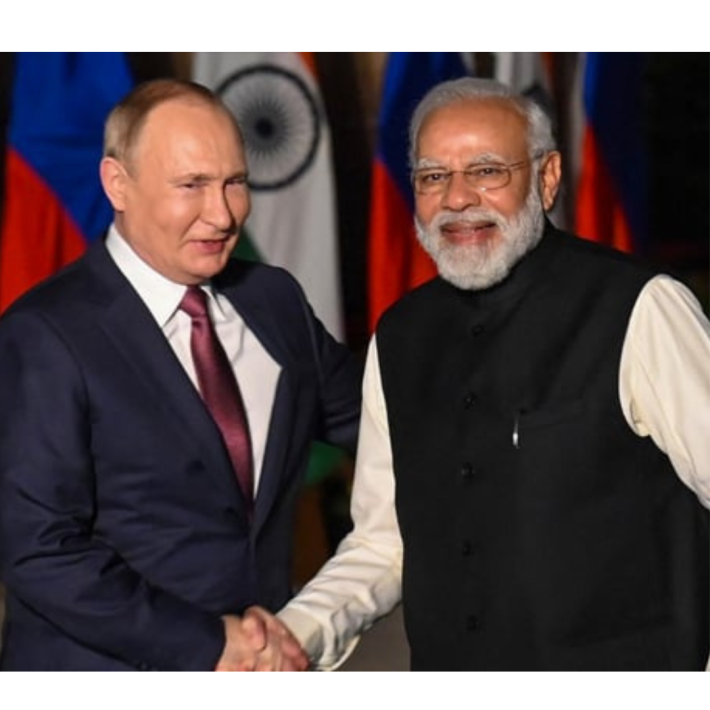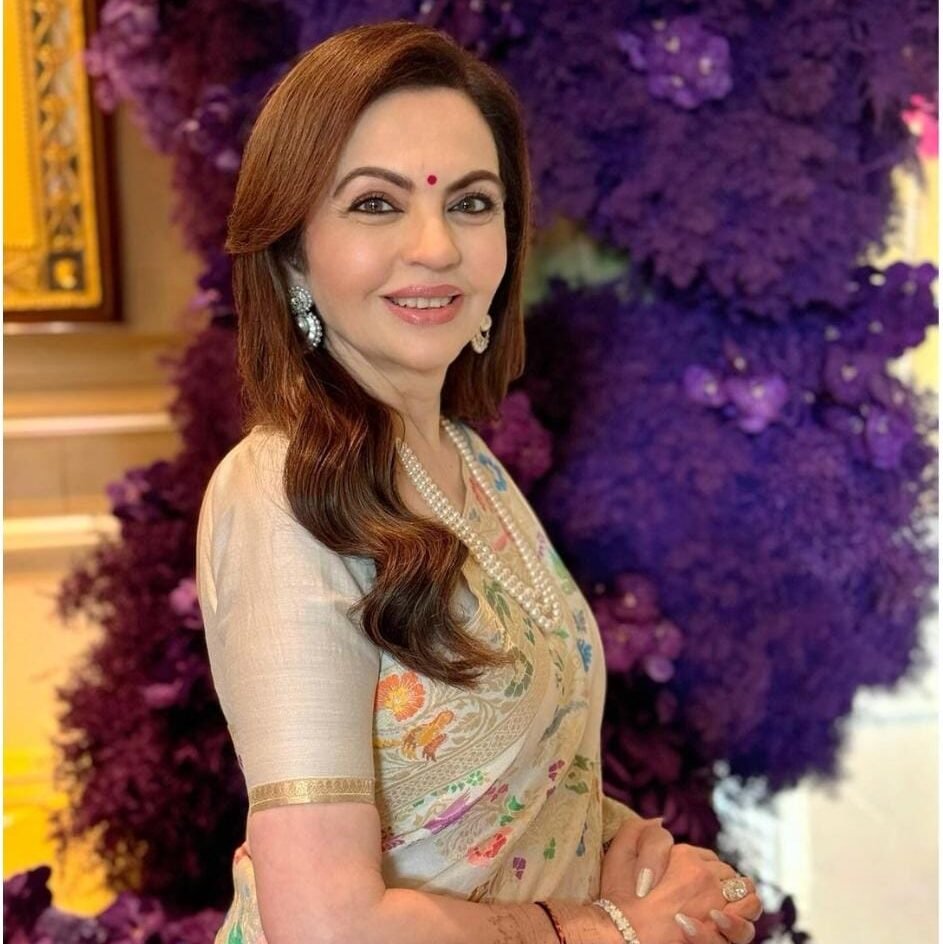Considered by some as ‘the most consequential Finance Minister India has ever had’, Nirmala Sitharaman has braved considerable storms to keep the economy sailing. A look at the rise of India’s sharp, proactive, no-nonsense, first full-time FM.
By Nichola Marie

Back in 2010, when Nirmala Sitharaman became spokesperson of the BJP, it raised quite a few eyebrows. Mainly because she was far from the typical ‘Bharatiya Nari’ mould that the party had hitherto favoured. After all, a ‘Free Thinker’ from Jawaharlal Nehru University of the 1980s is not exactly the expected profile for a BJP spokesperson. But Sitharaman did not only slip into that role effortlessly, she has gone on to shine in greater roles as well, namely as India’s first full-time Finance Minister. Confident, articulate and intelligent, as of 2023, she has presented five annual budgets and fact remains that it was under her leadership that India reached the US$3.1 trillion economy mark.
She is also one of the party’s biggest voices on the international stage, ensuring the world takes note of India’s achievements. Recently, leading a high-powered delegation to Washington to attend IMF, and World Bank meetings, she emphasised how the Indian economy today is transparent, open and watchable, making a strong pitch before the American business community to come and invest in India and be part of the country’s growth story. She maintained that these are results of the path-breaking and futuristic reforms, including digitisation being undertaken by Prime Minister Narendra Modi in the last nine years. “Digitisation has had an immense impact on the Indian economy, bringing transparency,” she said, adding that earlier, nearly 40% of the Indian economy was grey. “Now, the Indian economy is not small, (it is) transparent, open, watchable if you want to use that word… Therefore, for the next 25 years in the budget, we proposed that India should become an artificial intelligence hub,” she said. Stating the focus on artificial intelligence and green hydrogen, she added, “By 2047, we expect India… meeting the aspirations of our youth… You’re looking at a very high potentially youthful, very skilled population which is going to contribute to India’s growth… We are looking at a lot of measures and steps which will bring in life and rejuvenate the economy.”

Loud & Clear
Each year, Sitharaman faces the inevitable post-budget criticism, setting the record straight and giving it back to her detractors with vim and vigour. This year, in response to senior Congress leader P Chidambaram’s labelling of the budget as ‘callous’, and that it betrayed the hopes of the vast majority of the people, she countered, “Spending for capital expenditure we can all talk about – to whom it goes, how it goes, and who benefits from it. But at the cost of social welfare (that opposition parties have alleged)? I am not sure they have done their work. I invite them to go and look into the details of the budget.”
The previous year, in 2022, rebutting opposition criticism of her budget, she retorted, “He [Shashi Tharoor] said India is facing ‘andha kaal’. Sir, there was an andha kaal, but it was by Congress. In 1991, we had foreign exchange reserve for two weeks and we also know about the Emergency, that was andha kaal. When we are talking about inflation, double digit inflation during UPA 1 and 2 was andha kaal. Coal scam, 2G scam… every day there was corruption scam… that was andha kaal. Macroeconomic fundamentals going idhar udhar… that was andha kaal with policy paralysis.”
In an article in Swarajyamag.com, Tushar Gupta dubs Sitharaman “easily the most consequential Finance Minister India has ever had.” He writes, “In the economic history of India, several finance ministers have had the front-row seat to the macro shocks that have rocked the country. From wars to the balance of payment crisis, they have seen it all, and yet, Nirmala Sitharaman’s tenure comes across as unique and arguably the toughest, even when compared to her recent predecessors who sailed through the aftermath of the 2008 financial crisis.”
Gupta points out that when Sitharaman took over the reins from Arun Jaitley in 2019, she had some big shoes to fill. “Less than a year later, she presented her first complete budget, only to see the country, and the world at large, be consumed by the Covid-19 pandemic, sending all her plans for a toss. In 2021, hopeful that the worst was behind, she presented another budget, only to see it disrupted by the Delta wave in April and the Omicron wave in December. Come 2022, and Sitharaman completed a hat-trick of budget disruptions, as Putin’s war led to a complete disruption of the macro environment.” He gives full credit to her for braving it all, emphasising, “To have three budgets sent for a toss and still keep the economy sailing through choppy waters is no mean feat.” He points out that the economy was not in doldrums because of internal factors, but because of factors that were beyond the control of anyone at the helm of affairs, namely “a once-in-a-century pandemic, and a war not many saw coming which ushered inflation unthinkable in the West and an interest rate hike spree unprecedented in recent times.”
Some of Sitharaman’s positive outcomes are seen in the agile thinking during the pandemic, saving of Indian MSMEs and taking on China, huge infra push with a four-fold increase in capital expenditure, corporate tax reform, moving towards a lower tax regime, and commendable fiscal management.
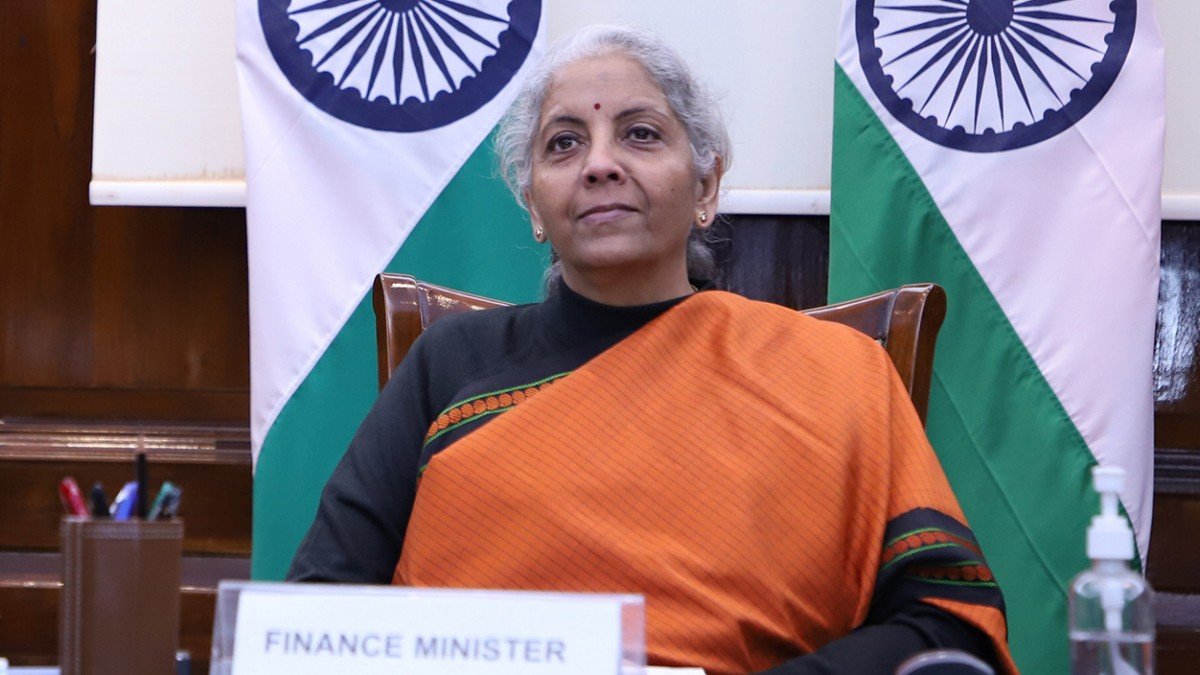
Growing In Leaps And Bounds
Sitharaman has enjoyed one of the swiftest ascents in Indian politics. Her quick rise shows that the BJP high command considers her a prized asset. Her first semi-political innings began when she became a member of the National Commission for Women in 2003 when Atal Bihari Vajpayee was the Prime Minister. She formally joined the BJP only in 2006, after her tenure with the NCW ended, and became a party spokesperson soon after. She did it, she would later say, because she agrees with the party’s ideology. “I did not join the party in its days of glory and therefore being relevant in politics was the only criterion for me,” she had replied when asked why she joined BJP in Hyderabad, since the party did not have much relevance in Andhra Pradesh politics at that time.
Soft-spoken but articulate, in 2012, she worked directly under Modi, given the responsibility of organising BJPs media campaign for the elections. An influential BJP spokesperson during the 2014 Modi campaign, in May 2014, she was appointed Minister of State (independent charge) of Commerce and Industry. For six months in 2014, she was also a junior minister to the then FM Arun Jaitley.
In 2017, she was cherry-picked by PM Modi as India’s first full-time Defence Minister, breaching an enduring glass ceiling as she assumed responsibility of a male-dominated military.
Yet, despite holding a key portfolio, she remained something of a relatively unknown entity when, two years later, in a surprise move that created considerable ripples, she was named the Finance Minister. Her promotion was meant, as claimed by some quarters, to cut certain party-members to size. Others opined that her lack of experience, deferential, collegiate style of working, and her being amenable to direction were appreciated by the PMO. She herself would explain it as ‘cosmic grace’, no less. “Somebody who has come from a small town, grown into the party with all the support of the leadership… and if given such a responsibility, it just makes you feel sometimes that cosmic grace is there. Otherwise, it is impossible,” as she told reporters shortly after. At the end of the day, general integrity and a distance from business lobbies were possibly the main pluses in her favour as she took charge as Finance Minister, shouldered the daunting responsibility of helming the then-US$2.9 trillion economy, and succeeding a long line of famous predecessors dating back seven decades.
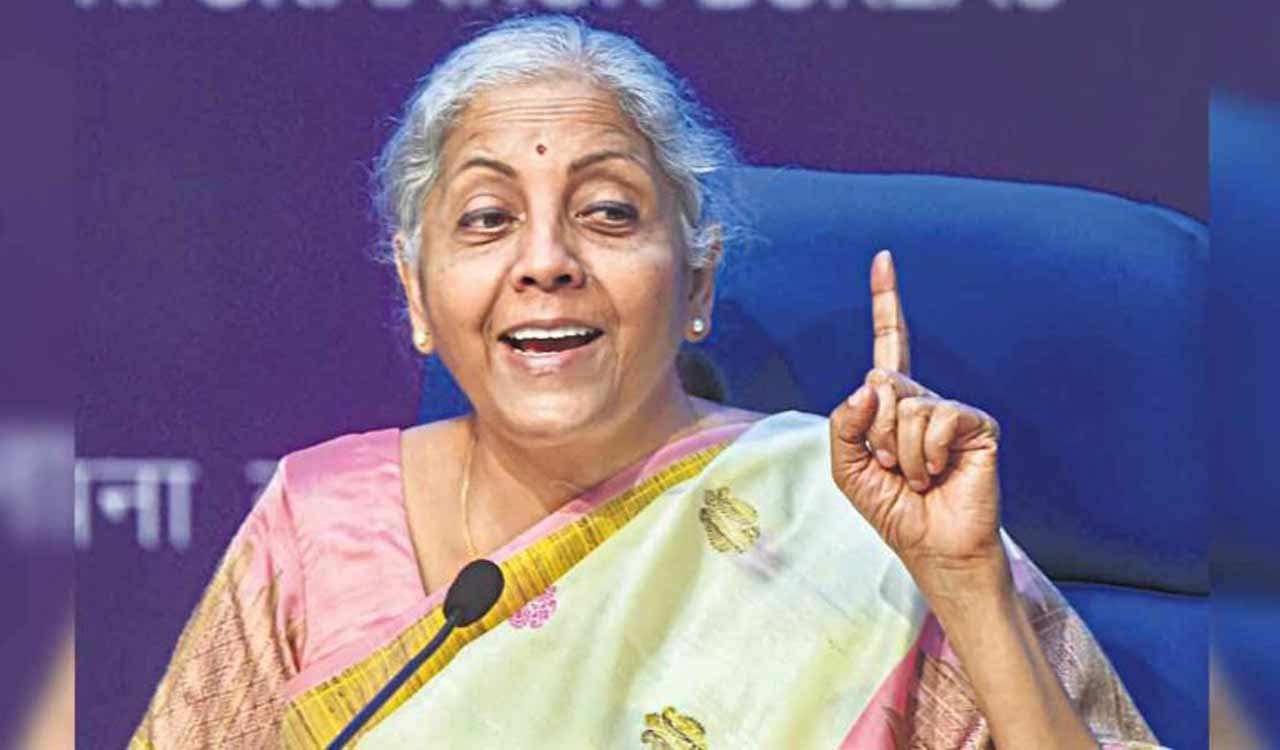
The Right Background
Born to Shrimati Savitri and Shri Narayanan Sitharaman on August 18, 1959 in Madurai, Tamil Nadu, she hails from a family where education was prized and learning was placed above all else. As her father was with the Indian Railways in a transferable job, she grew up with relatives in Chennai and later Tiruchi, where she completed her graduation. She schooled in Chennai and graduated in Economics from the all-woman Seethalakshmi Ramaswami College in Tiruchirappalli, where her former teachers remember her as an “exemplary student”. She would reportedly devour volumes or economics books, and clear her doubts with teachers. Well-known in college for her oratorical skills, she would win prizes in every competition she took part in, whether intra or inter-college. Incidentally, Sitharaman continues to maintain her ties with her alma mater, accepting invitations to attend events as chief guest, where she has also delivered speeches inspiring the students to enter politics and “clean it up.”
A postgraduate in Economics from Delhi’s Jawaharlal Nehru University (JNU), she has an MPhil in International Relations. It was at JNU that she was exposed to politics, living in Godavari hostel with a group of friends who were Free Thinkers. The Free Thinkers was a forum that discussed the politics of both the right and the left. She was, in fact, one of the Free Thinkers’ posse when it gheraoed the Vice Chancellor’s office in protest against the sealing of a student’s room.
After marrying Parakala Prabhakar, whom she first met at JNU, the couple moved to London. She had registered for a PhD dissertation (on India-Europe textile trade in the GATT framework); it wasn’t completed because Prabhakar got a scholarship for a PhD at the London School of Economics and she couldn’t appear for the viva. In a short-lived pursuit, she signed up to be a salesgirl at Habitat, a home décor store in London’s Regent Street. Here, she won a bottle of Moët & Chandon champagne that winter because she made record Christmas sales!
She went on to join the London office of the professional services firm, PricewaterhouseCoopers, where she worked on transferring Western audit systems to post-Cold War Eastern Europe. In 1991, she and her economist husband returned to Hyderabad, as it was their “conscious decision” to have their impending child born in India.
After setting up a public policy institute as well as an alternative education school in Hyderabad, Sitharaman gravitated towards the BJP. Incidentally, her mother-in-law was a Congress MLA in Andhra Pradesh and her father-in-law, Seshavataram Parakala, a well-known Congress politician and an associate of P V Narasimha Rao.
Civil servants who have worked with her in the past, point out her proactive and hands-on approach. Her attitude of – “If I don’t know, I don’t know. There is no harm in learning,” has clearly held her in good stead. She was also appreciated for her crystal-clear, self-explanatory instructions and reasonable deadlines!

A Powerful Force
In 2022, Sitharaman ranked number 36 on the ‘Forbes’ list of the world’s most powerful women, for the fourth time in a row. In 2021, she ranked number 37, while she was in the 41st spot in 2020 and 34th in 2019. ‘Fortune India’ ranked her ‘The Most Powerful Woman in Business in India’, for her economic rescue act, namely her achievements in inflation control, revenue augmentation, and infrastructure.
All eyes continue to be fixed on the FM as she navigates both micro- and macro-economic uncertainties, including the geo-political situation and global inflation. Going by her quoting of the Chanakya Niti, namely – “Karya purusha karena lakshyam sampadyate (With determined human efforts, the task will surely be completed),” she isn’t shying away from the challenges.
